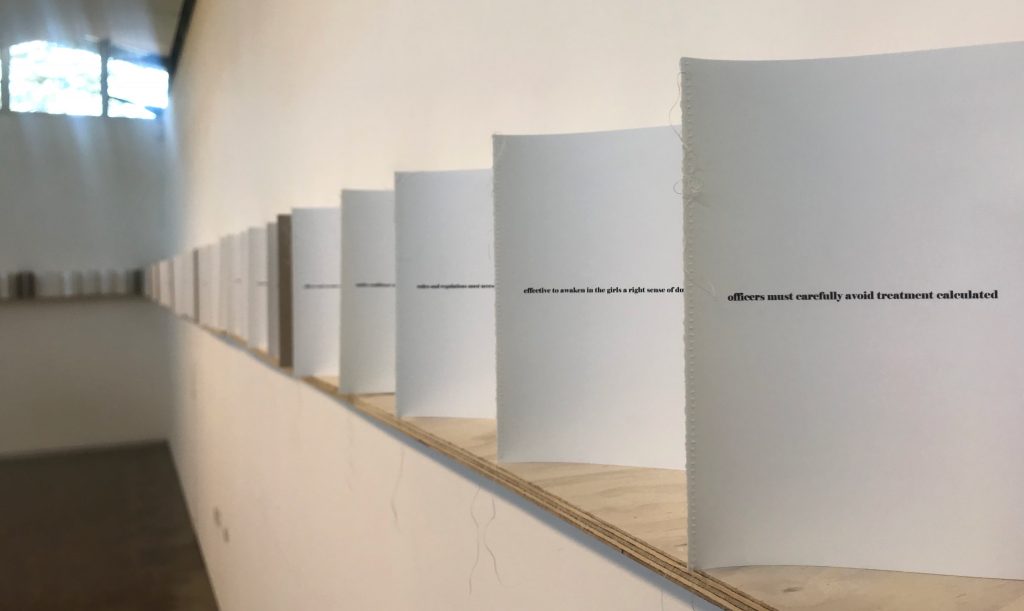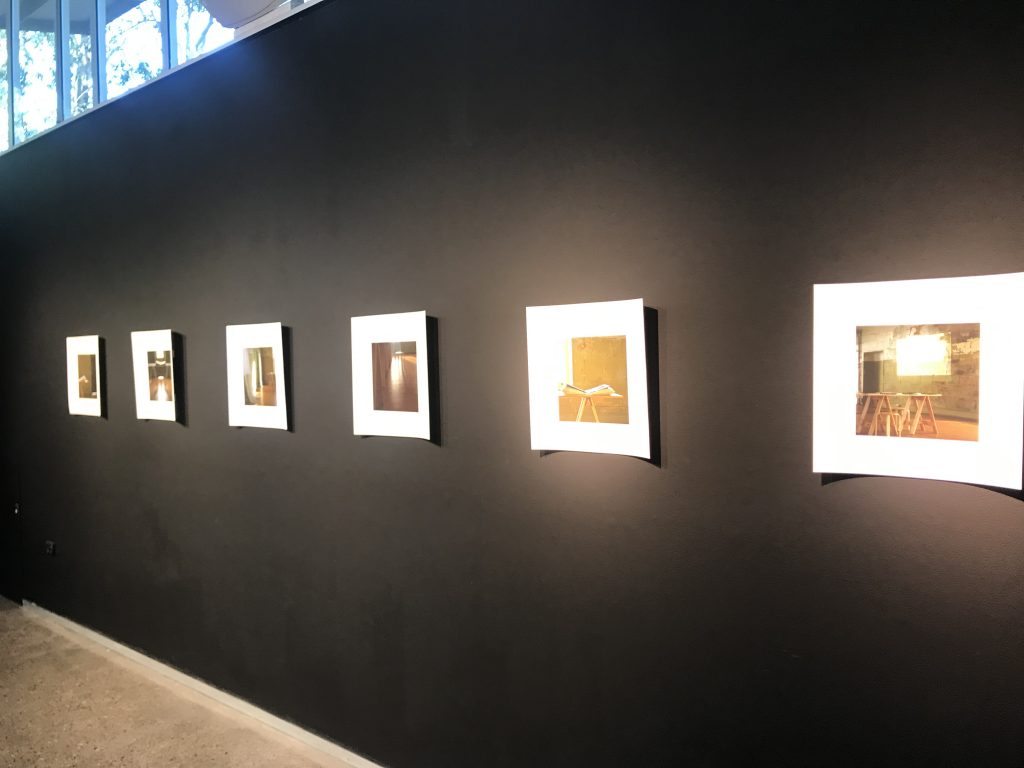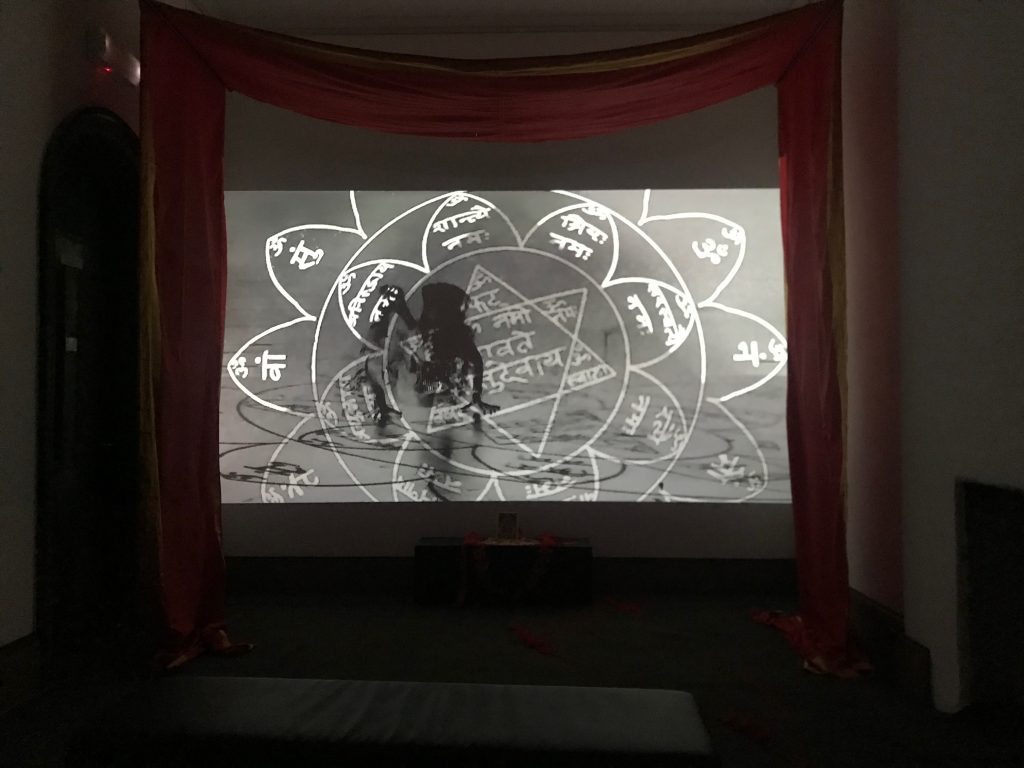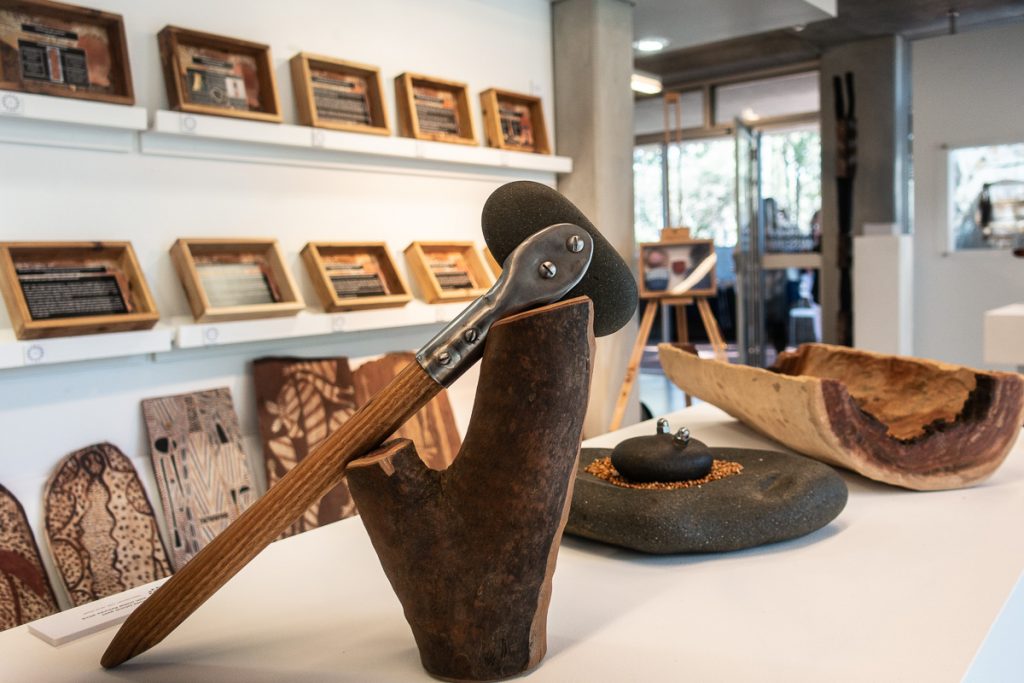Kathryn Jeanes. Biloela: Afore and Beyond. The University Gallery, University of Newcastle, NSW. 24.04.19-08.06.19

The Biloela installation is part of a PhD project. It is based on research into nineteenth century schools for ‘wayward’ working class girls in Newcastle and Parramatta.

There are no visual records of the girls, so Jeanes has created her own archival works to convey some sense of the traumatic experience of incarceration. The work is about exploring a gap in accounts of the past and exposing brutality. The exhibition comprises of text (on the wall, accompanying images, in books), artefacts (piled up packages, overalls, books), images (mounted directly on, and curving away from, the wall) and a concertina, sewn book with text, on a shelf running along three sides of the gallery.

In all, it makes a hidden past visceral. In relation to my own work, it provides an example of the creation of an (imagined) archive and the mediation of this in gallery space. It raises the question of the extent to which the research should be visible. How much is experiential, how much is intellectual; what is said and what is not. Ultimately, this is about constraint of the body, but within a narrative of state and colonial brutality and control.
KNOWN/UNKNOWN, The Lock Up, Newcastle, NSW. 06.04.19-26.05.19. Featuring artists Bleck, Toby Cedar, Rakini Devi, John A. Douglas, Amala Groom and Amrita Hepi. Curated by Jessi England.
KNOWN/UNKNOWN similarly relates to the body. It is a group show, with all featured artists involved in making art with the body.

In the notes to the exhibition the curator, Jessi England, quotes Tracey Warr (2000: no page given) from the preface of The Artist’s Body, and observes that each of the artists touches on one or more of the ideas and issues identified.
Over the course of the last hundred years, artists and others have interrogated the way in which the body has been depicted and how it has been conceived. The idea of the physical and mental self as a stable and finite form has gradually eroded, echoing influential twentieth-century developments in the fields of psychoanalysis, philosophy, anthropology, medicine and science. Artists have investigated the temporality, contingency, and instability of the body, and have explored the notion of consciousness, reaching to express the self that is invisible, formless and liminal. They have addressed issues of risk, fear, death, danger, and sexuality, at times when the body has been most threatened by these things.
All exhibits have a video component, with varying use of artefacts, still images, sound and text. The exhibition space is a former colonial prison, with a number of exhibition spaces of varying size (some of these very small cells). Whilst the space fits well with the theme, it appears that some of the exhibits were not designed specifically for the setting. The ‘cells’ offer a constrained viewing space, which could be used to good effect in an installation created specifically for the space.

Reflecting on my own work, I need to think about the extent to which it is portable and adaptable to different spaces. My exhibition at the Sue Bramley Centre was very much a ‘pop-up’ that could easily be reconfigured for other places. I haven’t thought clearly yet about how best to display my more recent, less conventional, work, though I did try projection today following a workshop.

Getting high enough resolution is an issue. A number of the video exhibits in Known/Unknown used large LCD screens, which is worth exploring. One also used VR; a step too far for me at the moment.

The most impactful piece for me is Amrita Hepi‘s The Pace (2018), a three channel video work with rope artefacts co-commissioned by the gallery. The fast-paced film centres on the activity of skipping, as a historical form of women’s culture, but relates this to other social and cultural activities, particularly the indigenous art of weaving (resonating with Munro’s yarning work), and switching between practices involving rope, chains, braids, threads and spider’s web. The film is fast paced with a driving soundtrack, edited to layer imagery and resist traditional narrative. The piece occupies the larger central gallery space, giving it room to breathe and for the audience to circulate (a contrast to the more constrained and claustrophobic side cells/galleries. The exhibition impressed on me the need to design installations around the exhibition space, and brought to mind the constructed temporary ‘gallery’ spaces used by Samar Maqusi to set up exhibitions and installations in refugee camps.
References
England, J. 2019. Notes for KNOWN/UNKNOWN, The Lock Up, Newcastle NSW.
Warr, T. 2010. The Artist’s Body. London: Phaidon.




